March 16, 2022
Map and road video of today’s route
I was back on the road today but only for the 137 mile drive across to Dallas’ twin city, Fort Worth, and then south to Waco.
The time in Fort Worth was spent in the Stockyards National Historic District as “Longhorns” are the icon used to represent the city. The Fort Worth Livestock Exchange was one of the largest cattle markets in the country in the late 1800s and early 1900s, with about a million cows sold each year. The actual stockyards have largely been replaced by museums, shops selling everything cowboy/girl, restaurants and bars.
I arrived much later than planned due to an unusual traffic/GPS issue. A long freight train had stopped on the track and was blocking all the routes into the Stockyards area at several railroad crossings. I could not figure out how to make my GPS avoid railroad crossings and had to tell it to navigate to a bridge over the tracks on a highway several miles away, then re-trace my original route until it gave me a route that worked. This lost me half an hour of my time to explore the area before the main event – the live cattle drive along Exchange Street.
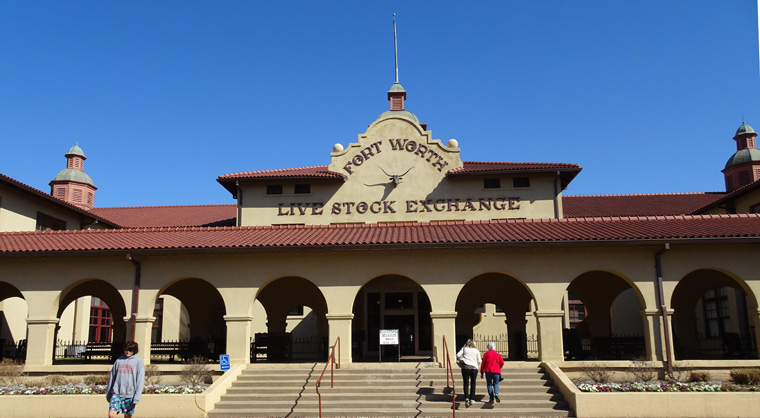 The livestock exchange building is still in use as offices and also contains a small museum.
The livestock exchange building is still in use as offices and also contains a small museum.
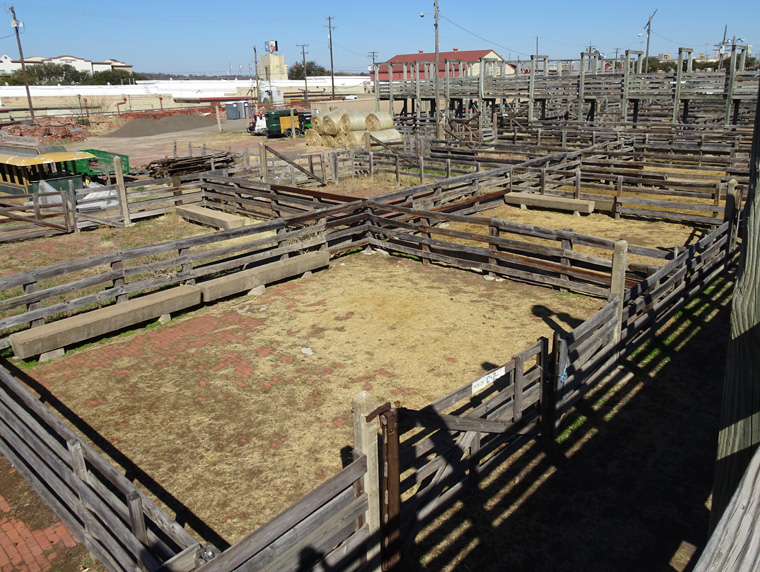 There are a few livestock pens remaining but almost no livestock.
There are a few livestock pens remaining but almost no livestock.
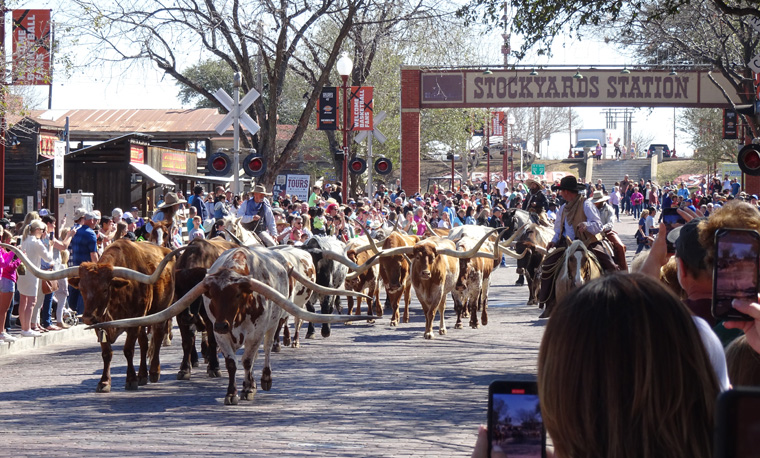 The cattle drive is on display twice a day. The horns on these animals are between 6 and 9 feet (2 – 3 m) across.
The cattle drive is on display twice a day. The horns on these animals are between 6 and 9 feet (2 – 3 m) across.
Here is a brief video. I would not have wanted to see a stampede!
Next stop was Waco Mammoth National Monument which is the location where the fossils of a herd of 23 mammoths were found. This discovery is so significant that the dig area has been covered to preserve the fossils in place – normally they are removed for study. This will allow future discoveries to be made as research methods improve. The date of this herd was difficult to determine using carbon dating or Uranium decay but the recent development of optically stimulated luminescence, which determines the length of time since quartz in the soil was in sunlight, suggests an age of 65,000 to 72,000 years. Future techniques may reveal more. The dig center has many exhibits but it was still a relatively short visit.
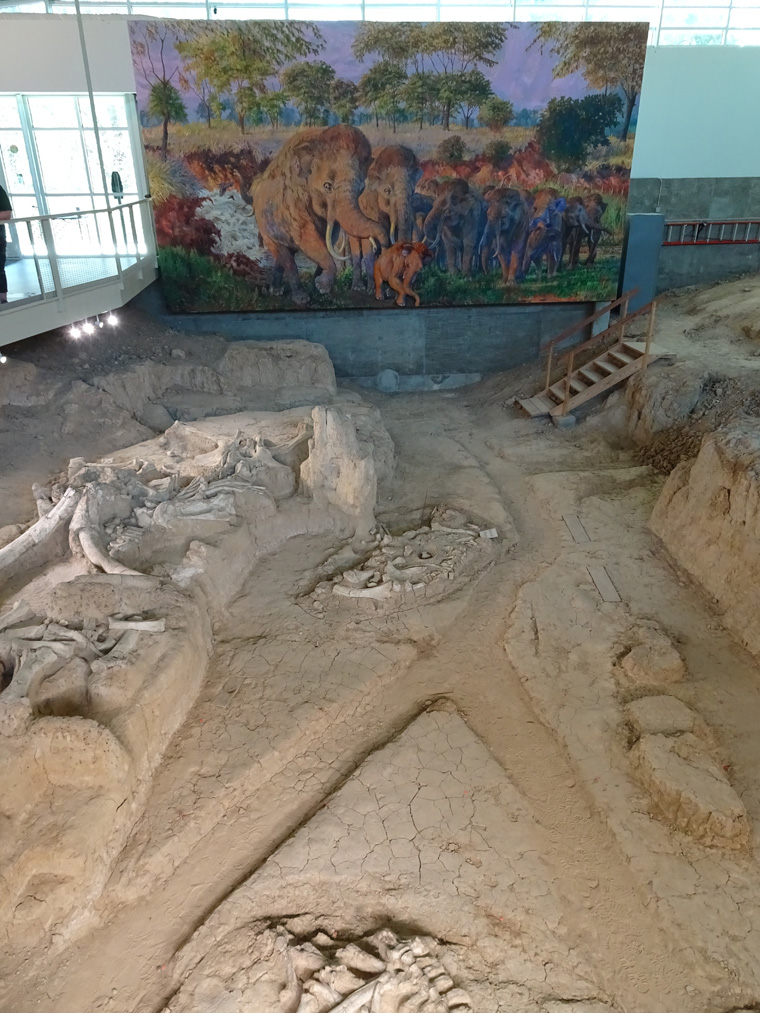 The dig site is still being researched due to the dig center building that protects the fossils.
The dig site is still being researched due to the dig center building that protects the fossils.
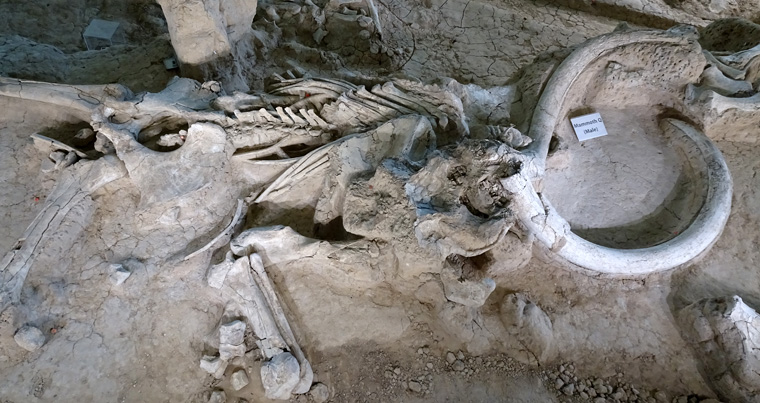
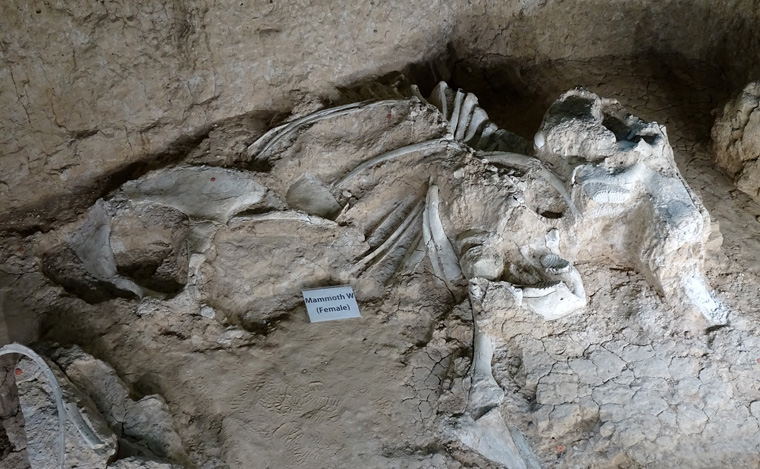 Two of the mammoth fossils that are basically intact.
Two of the mammoth fossils that are basically intact.

It is so much fun to read your blogs! I feel like you are traveling some of the forgotten nooks and crannies of America. They give you a peak into what was and what is! How special! Looking forward to exploring America with you on your journey
Thanks. I hope I can continue to pique your interest.
you’re doing a good job so far!!
Thanks – I think?
Steve the photos are stunning! I guess you are getting to see a side of the US that we don’t get to experience. This vast country is quite awesome. Here’s wishing you a very Happy St. Patrick’s Day! Don’t forget to have a Guinness !!
Thank you. I stuck with IPA this evening as the place did not have Guinness on draft.